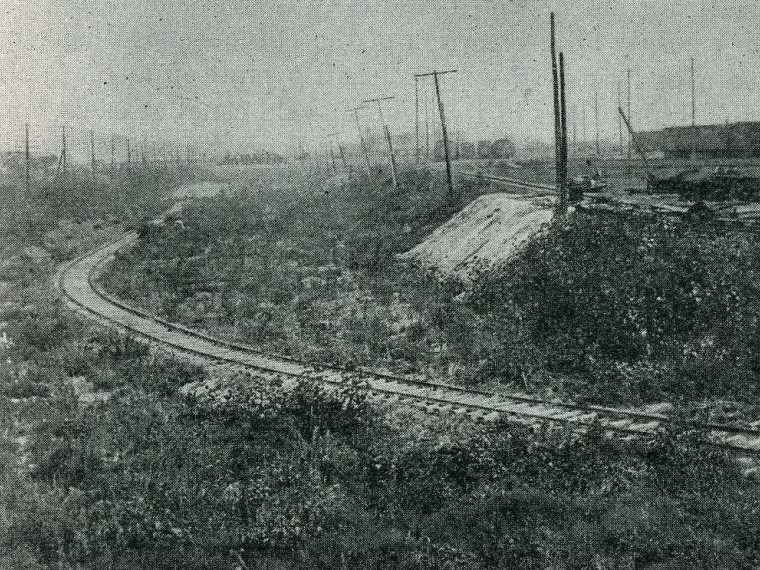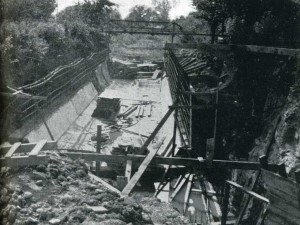1848: The canal opens. The several hundred boats plying the canal were sized to fit the 110 by 18 foot locks. They were low, 16-18 feet wide, 98 feet long and somewhat squarish. Power was supplied by teams of mules with a long tow rope. Even at this early date an important use of the canal was for sewage disposal. Chicago’s waste drained into the stagnant Chicago River which flowed towards the city’s Lake Michigan water supply. Efforts were made to run pumps in order to drain the river away from the lake.
1860s: Steam-propelled, propeller-driven canal boats are introduced. One self-propelled boat could tow several of the boats previously towed by mules. It also allowed the boats to go directly to other points on the Chicago and Illinois Rivers once they left the canal.
1871 The canal is deepened in order to flow by gravity away from Lake Michigan and the Chicago River, thus draining sewage away from the city’s water supply. This effort was not entirely successful, as owners of higher swampland had drained their properties into the canal. Thus often the canal flowed towards both the Chicago and Illinois Rivers. Pumping was later resumed.
1882 Cargo peaked on the canal at a million tons per year. The sewage problem still wasn’t solved, so studies began on a new and larger “Drainage Channel.” I&M Canal traffic began a sharp decline.
1900 The Sanitary and Ship Canal opens. It was a much larger canal that finally reversed the flow of the Chicago River away from Lake Michigan. The I&M Canal continued to operate although traffic was reduced and sections of it were abandoned. In some years revenue from permits to cut ice exceeded tolls from canal boats carrying cargo.
1930s Cargo operations officially cease. The Civilian Conservation Corps restores much of the canal in order to turn it into a recreational waterway. It has continued as a recreational waterway and trail to the present day.
1964 The Stevenson Expressway (I55) opens using a portion of the I&M’s Chicago right-of-way.
Sources used to compile this timeline include the books Prairie Passage, Jim Redd's The Illinois and Michigan Canal, The Illinois and Michigan Canal: Chicago Origins , Report of the Canal Commissioners, Illinois Division of Waterways Report and The Encyclopedia of Chicago.




Add a comment to: The Illinois and Michigan Canal, 1848-2014: Technology That Changed Chicago